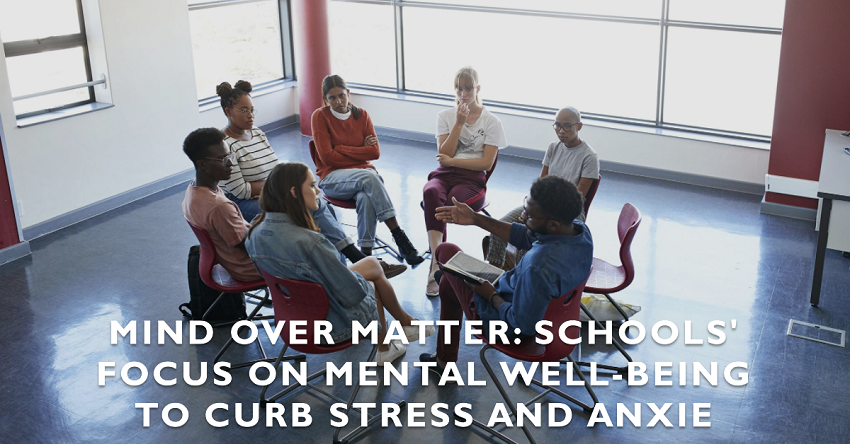In an age marked by technological advancements and rapidly changing social dynamics, today’s students face a unique set of pressures. From academic expectations to social media comparisons, the sources of stress and anxiety are multifaceted. Recognizing the profound impact of these issues on students’ well-being and academic performance, schools across the USA are adopting various measures to address them. This article explores the schools’ proactive approach to nurturing mental well-being, emphasizing the urgent need to break the chains of stress and anxiety.
The Vaping Epidemic and its Link to Anxiety
One of the most pressing concerns for educators and parents alike in recent years has been the sharp rise in vaping among teens. What might appear to some as a “harmless” alternative to traditional smoking has deep-rooted implications. Numerous studies have highlighted the link between vaping and increased levels of stress and anxiety among teens. The nicotine present in most e-cigarettes can act as a stimulant, exacerbating feelings of nervousness and agitation.
To combat this, many schools have started using vape detectors in bathrooms and other common areas. These devices can detect the aerosol emitted from e-cigarettes and immediately alert school officials. The use of such detectors not only acts as a deterrent but also aids schools in identifying and helping students caught in the grip of this unhealthy habit.

| Action | Objective | Outcome |
| Vape Detectors | Identify vaping instances in school premises | Reduced vaping incidents, improved student health |
| Counseling Sessions | Address the root causes of vaping addiction | Enhanced student understanding and well-being |
| Awareness Programs | Educate students about vaping’s consequences | Informed student choices and peer-led resistance |
Holistic Approaches to Mental Health
Beyond the issue of vaping, schools are becoming more attuned to the broader mental health needs of their students. Many institutions now incorporate mindfulness and meditation practices into the daily routine. Such practices have been shown to improve concentration, reduce stress levels, and enhance overall emotional well-being.
In addition to this, peer support programs are gaining traction. These initiatives train students to identify signs of stress and anxiety among their peers and offer first-line support. By empowering students to support one another, schools foster a sense of community and shared responsibility.
Empowering Teachers to Recognize the Signs
Teachers play a pivotal role in students’ lives, often acting as the first line of defense against mental health issues. Many schools are investing in training programs that equip teachers with the tools to recognize signs of stress and anxiety. This proactive approach allows educators to intervene early, guiding students towards appropriate resources and support.

Engaging Parents in the Mental Well-being Conversation
Parental involvement is pivotal in addressing student stress and anxiety. Schools are now organizing workshops and informative sessions tailored for parents, emphasizing the importance of a united front in tackling mental health concerns. These sessions provide parents with insights into the challenges faced by today’s students, from academic pressures to the intricacies of digital life, including the allure and risks of vaping. Armed with this knowledge, parents can support their children better at home, reinforcing the school’s efforts. Schools are also establishing open channels of communication, encouraging parents to share concerns and observations about their children’s mental well-being. By bridging the gap between school and home, a holistic approach to student mental health is becoming a tangible reality.
Collaborations with Mental Health Professionals
Recognizing that schools cannot tackle these challenges alone, collaborations with mental health professionals are becoming more common. By bringing experts on board, schools ensure that students have access to specialized care when needed. Whether it’s through regular workshops, counseling sessions, or emergency interventions, this collaborative approach ensures that students are not alone in their struggles.
Conclusion
Mental well-being is no longer a sidelined topic in schools. As the challenges and pressures faced by students evolve, so too must the support structures in place. From combatting the vaping epidemic to introducing mindfulness practices, schools are making a concerted effort to ensure the holistic well-being of their students. Through these measures, educational institutions aim to create environments where students can thrive academically, emotionally, and socially.






